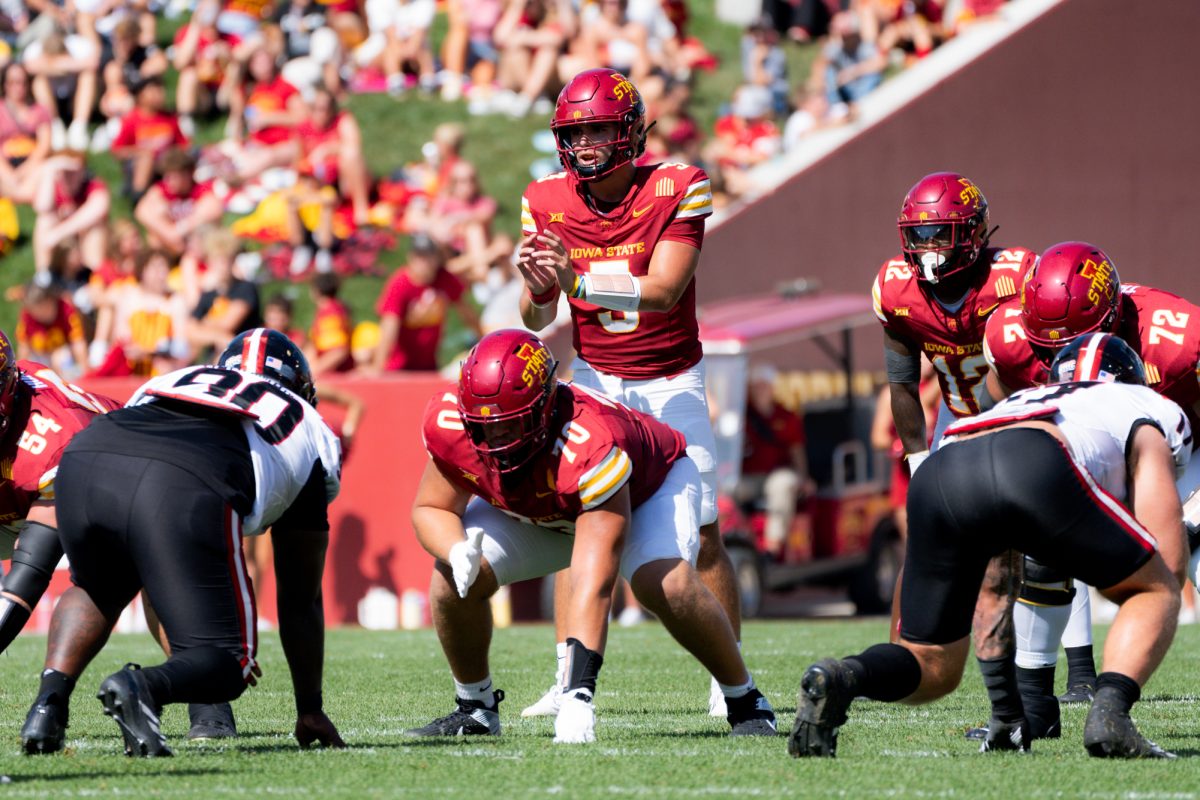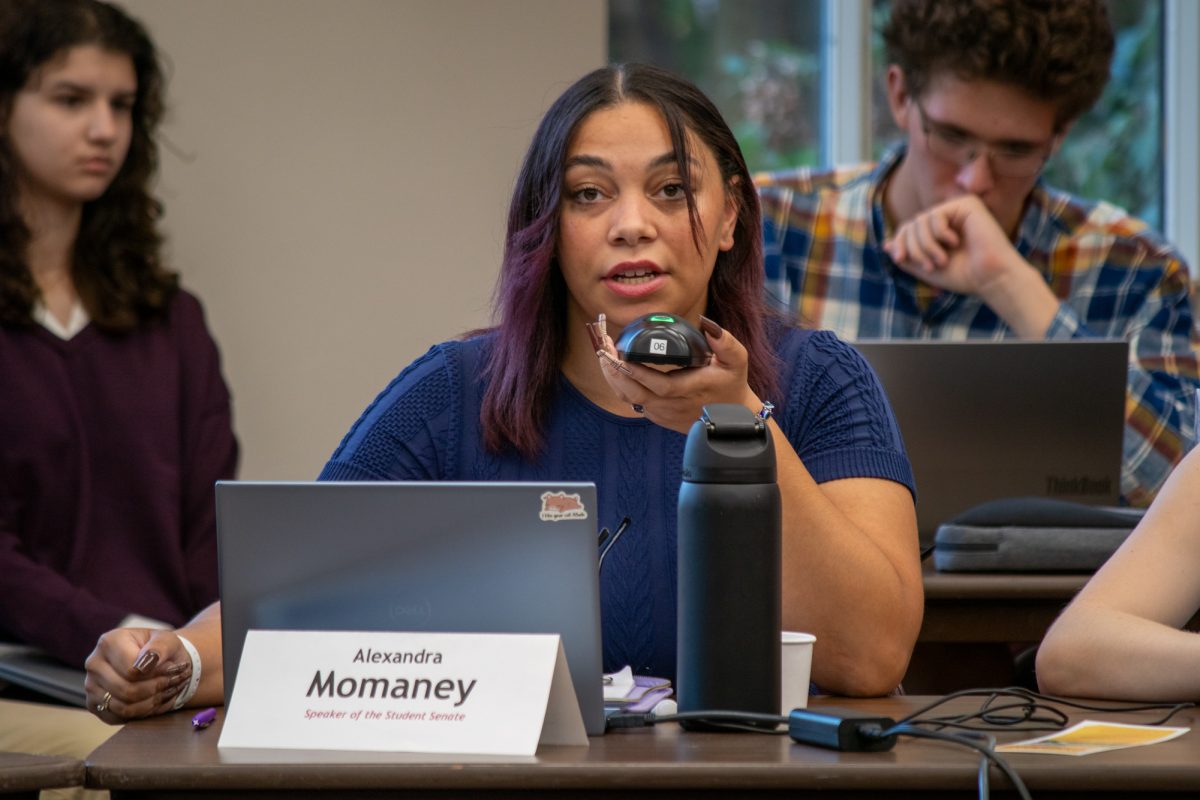Veggie manifesto: the herd eating the herd
October 1, 1998
When the fabled cows come home, you either frolic in the fields with them or slap their muscles on the George Foreman Grill and live the illusion of the good life. It’s that simple — either you show some intelligence and try to be watchful of what you’re shoving down your privileged gullet, or you mindlessly assert your top-of-the-food-chain ego.
Tell me all you want about how the shape of our pearly whites dictates the obligation, practically edited into the Bill of Rights by now, to eat meat, meat and more meat. Tell me how vegetarians lack protein and vitamin B-12, about how they are petty extremists latching onto a cause for the sake of a cause. Tell me how eating meat is a family tradition, or better yet, an American tradition.
Last July, the Associated Press announced that 200 million folks in the “land of the free and the home of the brave” celebrated Independence Day by eating an estimated 56.6 million pounds of beef, up from the daily standard of 47.2 million pounds. That’s right; we’re a free nation leading the world, so we better gorge ourselves. The only thing better than the Fourth of July Meatfests are $4 Las Vegas buffets.
I bet all the Ethiopians the Southpark gang didn’t save would have enjoyed the estimated 905.6 million pounds of corn needed to produce the 56.6 million pounds of beef for the 200 million decidedly well-fed Americans.
Now, before I ream all the fools who think that humans have to eat meat like we have to worship one male God on one given day for one set hour, let’s have a few words from our writer-as-a-real-person: Jen eats fish, decadently wears leather footwear and has been avoiding “red meat” for about five solid years because, to quote her, “it tastes like rot.”
She’s never been inside a slaughterhouse or a confinement building. She’s never hunted. She did fish, as a wee youngin’ but often opted to toss back the goods. She used to eat prime rib and roast beef. Most likely, the Big Mac she ate when she was 10 is still sitting in her colon, holding a round-table conference on the possibility of cancer later down the line.
When cattle (or pigs, or chickens, or turkeys, or whatever) are slaughtered, they immediately begin to decompose, right there on the Bob Evans conveyor belt. What a mess. When the heart stops beating, the blood stops churning through the kidneys, which stop filtering toxins, such as uric acid and bacteria, which then sit contentedly in the flesh you’ll find tasty someday.
Your body has enough trouble filtering out its own toxins, so it naturally goes on strike when the command from the esophagus is that more are on the way. Thanks to the nice pamphlet a health food store owner once pawned off on me, I can tell you that when enough uric acid from slaughtered animals enters the human body, it “produces an effect similar to caffeine, so that a higher level of restlessness, anxiety and aggressiveness is usually the result of eating meat over a long time.”
The solution for that dilemma is irradiation, a controversial method that, given the steam-roller tactics of mega-meat corporations, will be used widely and carelessly. To irradiate meat, and thereby kill every bit of bacteria, someone shoots your steak full of gamma rays. The vibe is that it’s absolutely safe. But that’s what we said about asbestos.
As if these complications aren’t enough trouble for meat barons, someone thought feeding ground up cows to cows was a lovely, cheap idea. Cheap, yes. Lovely, not quite. That fiasco, known as Mad Cow Disease, was and is pretty horrifying. Even long-time vegetarians may not be immune. There’s a theory that since the odd little protein behind Mad Cow Disease is, apparently, indestructible, it can remain dormant in the bone meal used as a fertilizer on vegetables. And it’s possible that the vegetables will absorb the protein and dutifully pass it on to a vegetarian.
So thanks a bunch, you steakhouse patrons. You’ve set your revengeful trap. In the meantime, as a bonus, you’ve created acres of feedlots, lagoons of manure, a guaranteed market for red dye (gotta keep that month-old meat lookin’ fresh, said the butcher) and a whole manic industry, masked as a science, panicking over how to make this tired soil sustain the least sustainable form of feeding ourselves.
Jen Hirt is a graduate student in English from Valley City, Ohio.






